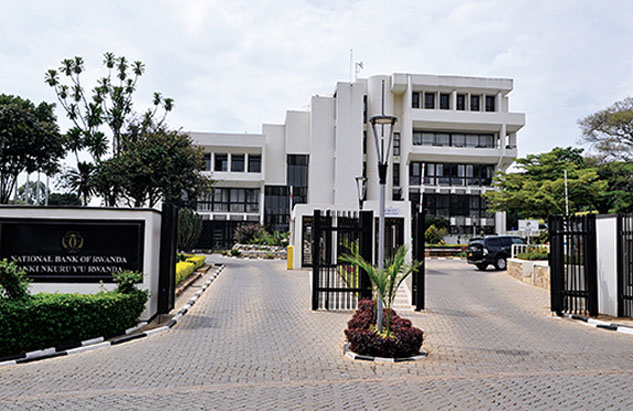
Central Bank Governor John Rwangombwa presents the MPC statement.
It is just five days ago, give or take, since the Rwanda Central Bank’s Monetary Policy Committee (MPC), released its latest quarterly statement, after its meeting convened on 14th February 2023.
You would be forgiven for thinking that little has changed, since the MPC’s previous statement last year, but that would be missing the effort needed to calibrate the various fiscal and monetary measures, to keep the economic outlook either improving, or holding steady.
Lower domestic agricultural output, global economic challenges, mainly due to the ongoing Russian war on Ukraine, are all keeping inflationary pressures high. Consequently, the MPC decided to increase the Central Bank Rate (CBR) from 6.5% to 7.0%.
The message is, if at all possible, take advantage of the high interest rates, put away as much as you can spare into savings, and wait for inflation, currently at 20.7% to head downwards, even further, having inched down from 21.6% as of December 2022.
All of this you have heard before, you might say to yourself, and you would be right. You may even feel confident enough to guess the BNR’s analysis for the domestic economy. And if your guess was that the Rwanda economy is expected to remain resilient, despite the global challenges, then you are on the money.
But as you deservedly pat yourself on the back, you might also consider congratulating the monetary and fiscal measures put in place to help the economy recover from adverse effects of Covid-19.
It is largely thanks to these measures, that the economy remains resilient, with Gross Domestic Product (GDP), increasing by 8.5% in the first three quarters of 2022.
And if you were alert to the MPC’s report for the last quarter, you will also be fairly blasé about hearing that thanks to the increase in global commodity prices, Rwanda’s merchandise exports rose by 31.4% in 2022, but that that was offset by a rise of 23.6% in merchandise imports, primarily due to rises in fuel prices, and commodities, internationally.
All this meant a widening merchandise trade deficit, by just over 19%, and a depreciation of the Rwanda Franc, by 6.05 percent.
What may have escaped your keen interest however, is that in order to support day to day economic activity, measures were put in place to ensure that not all the rises in fuel prices are shouldered by the consumer. The heat is intense, but the monetary and fiscal authorities are holding a parasol above the nation’s head, until the rains come.
After their meeting, a day after the MPC meeting, the Financial Stability Committee (FSC), was able to note that “financial sector remains stable and maintains its growth momentum amid challenges caused by global and domestic economic uncertainties…” Again, to be expected you might say. And indeed, there was little that was new, from the reports of the last few quarters.

Central bank of Rwanda
Every quarter the MPC, and FSC, announce that the financial sector as a whole is in rude health, and increasing in strength.
As of December last year, the total assets of the financial sector grew by 17.7%, rising to RWF 8,904 billion, from RWF 7,568 billion, in the year before.
The biggest sub-sector of banking grew by 18.3%, and the pension sectors, both public and private, grew by 9.6 percent, while the insurance sector grew by 17%. Such figures would be impressive enough at the best of times, but the world is barely emerging out of a pandemic that devastated global economies, only to be plunged into the biggest, most ruinous European war for seventy years.
That the health of the economy can be maintained in the face of these challenges, is due to the unheralded, by essential work being done, to strengthen the foundations of various sectors. This means everything from legal reforms, to the continuing modernisation of the financial systems, and the central bank’s alert oversight.
The recent merger of two merger banks, Bank Populaire du Rwanda (BPR), and Kenya Commercial Bank (KBC), for instance, seemed to create havoc for customers, but “seemed” is the operative word. There is no denying the enormous disruption caused for customers of both banks, with some queuing at the banks, for hours on end. It seemed chaotic.
But in justifiable indignation, one would miss that fact that there was no question of any customer losing their money. Such assurance does come out of thin air. It is a result of a well-regulated banking system. The banks perhaps overreached themselves, in trying to accomplish two complex systems in tandem, continuing system modernisation, as well as the merger.
Had one been done after the other, individual accounts would have been aligned with the new system, without customers ever having to hear about it, let alone having to do anything. Inflation is expected to come down towards the end of this year, but looking at the latest forecast, the next will most likely not produce any major surprises.
When the central bank governor, John Rwangombwa, sits in front of cameras, and tells us what you think you expected to hear all along, remember that the real alchemy lies in what has been done, and is being done, to maintain the changes, or hold the positions steady.

